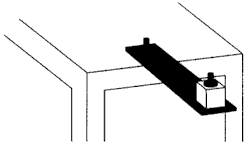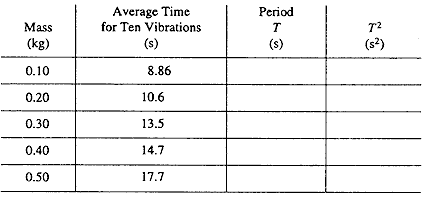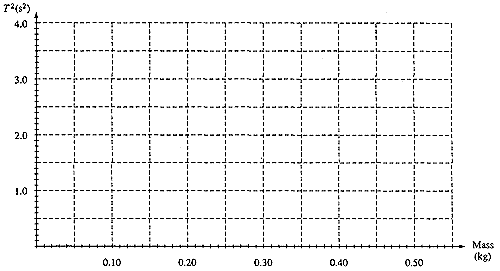
1996 Physics C Mechanics 1

1996 Physics C Mechanics 1

A thin, flexible metal plate attached at one end to a platform, as shown above, can be used to measure mass. When the free end of the plate is pulled down and released, it vibrates in simple harmonic motion with a period that depends on the mass attached to the plate. To calibrate the force constant, objects of known mass are attached to the plate and the plate is vibrated, obtaining the data shown below.
(a) Fill in the blanks in the data table.

(b) On the graph below, plot T2 versus mass. Draw on the graph the line that is your estimate of the best straight-line fit to the data points.

(c) An object whose mass is not known is vibrated on the plate, and the average time for ten vibrations is measured to be 16.1 s. From your graph, determine the mass of the object. Write your answer with a reasonable number of significant digits.
(d) Explain how one could determine the force constant of the metal plate.
(e) Can this device be used to measure mass aboard the space shuttle Columbia as it orbits the Earth? Explain briefly.
(f) If Columbia is orbiting at 0.3 x 106 m above the Earth's surface, what is the acceleration of Columbia due to the Earth's gravity? (Radius of Earth = 6.4 x 106 m, mass of Earth = 6.0 x 1024 kg)
(g) Since the answer to part (f) is not zero, briefly explain why objects aboard the orbiting Columbia seem weightless.